Examiners will trade clipboards for iPads and use a digital tool for marketing, as part of a wider DVSA transformation programme.
By the end of 2018, driving examiners will no longer mark tests using pen and paper, but will instead be kitted out with tablets running a newly built digital tool for marketing candidates.
The DVSA’s Digital Strategy 2018-2022, reveals the sweeping changes set to be made across all areas of the business in the coming years.
Over the next three years, DVSA will roll out improved technology and modernised digital services to improve its customer experience. This includes:
allowing driving examiners to check vehicle status, MOT and tax online
improving candidate identification technology at both practical and theory test centres, to help prevent fraud
developing improvements to the driving test for candidates, including being able to record the test debrief and email a copy to the candidate and trainer
moving away from paper-based forms that have been in existence for more than 25 years, meaning successful driving test candidates get their licences more quickly
using voluntary electronic driving log books as part of the learning process
introducing an online option for Approved Driving Examiners (ADIs) to book their standards checks
enhancing customer experience at MOT garages by improving test quality and making MOT systems more intuitive
The statement from the Department states: “There is no change to the driving test itself or to the assessment, only to the method of capturing the information during the test.
“Candidates who provide an email address can have the test results emailed to them after the test.
“Their results will also be sent automatically to the DVA Driving Licence system and if they passed the test a licence will be issued automatically, if appropriate.
“The digital tablets will be rolled out in a phased to all of our Driving Examiners and it is estimated that by late 2018, all test centres where category B test are currently carried out will be using tablet devices.”
Currently, every driving test in England, Scotland, and Wales is assessed using a paper copy of the DL25 form, on which examiners mark candidates’ performance and record faults. At the end of the test, the candidate and the test centre each receive a physical copy of the form, which is also scanned and sent on to the relevant authorities.
“Those scans are quite error-prone,” according to James Munson, director of digital services and technology at the Driver and Vehicle Standards Agency (DVSA), the government organisation that carries out driving tests and approves driving instructors.
To deliver an improved marking system, examiners will be equipped with Apple iPads over the next two to three months. Meanwhile, the DVSA will continue work on building a digital marking tool, a project which is currently in alpha phase.
“We will be building the service for the tablet – not just replicating the paper form,” said Munson.
“And the tablets will have a screen guard, so it will not distract the candidate. [Digital marking] will also enable us to capture more data.”


